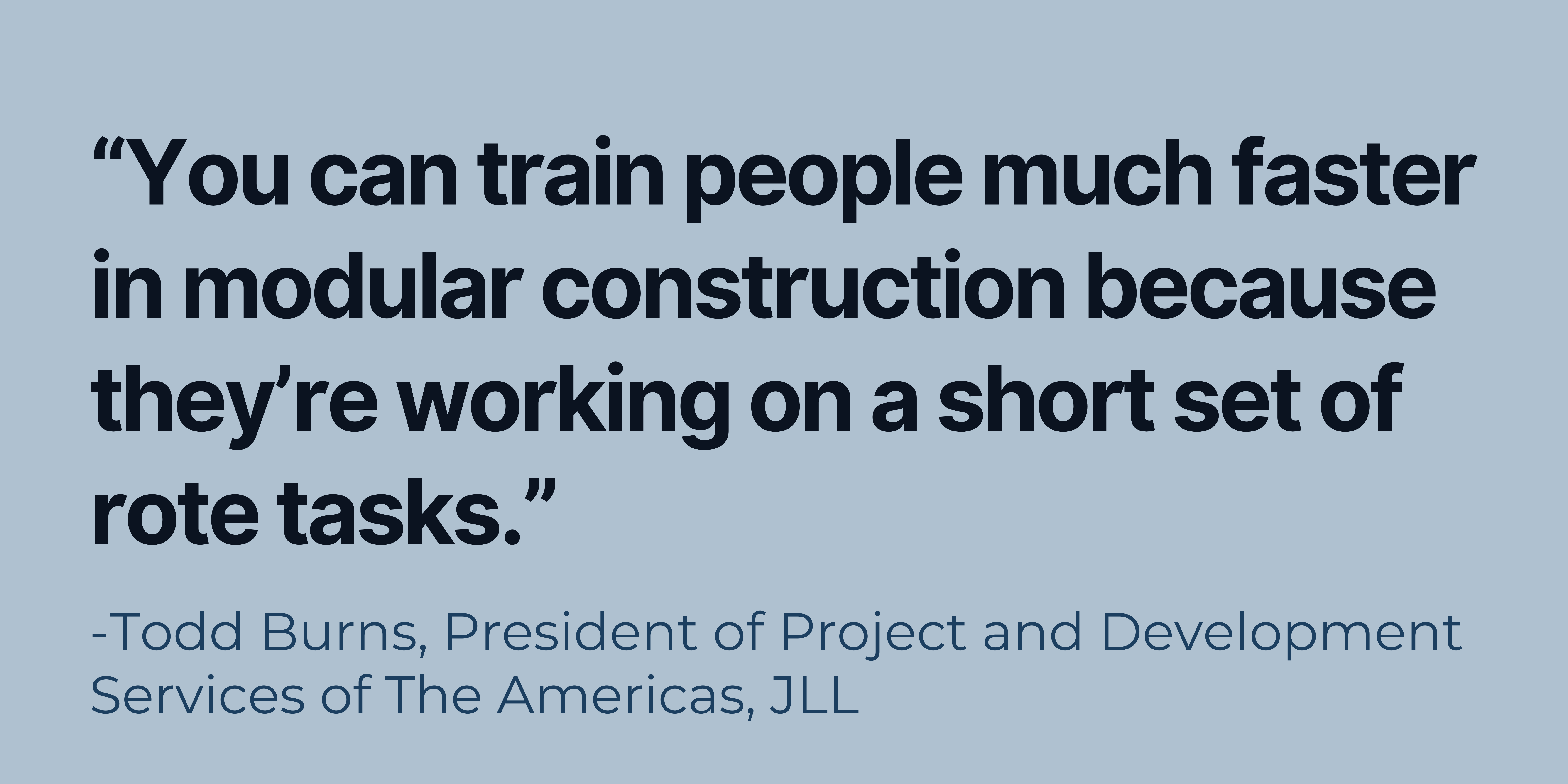Contents

After years of facing a global construction worker shortage, could modular construction offer a solution? Wall Street Journal spotlights VBC’s Berwick factory and talks with experts on what this means for the construction industry.
The US has faced an affordable housing crisis for years now, with such high demands and mass global construction worker shortages, the industry has been searching for a potential solution that has been right in front of them the whole time.
Volumetric Building Companies (VBC) founder and CEO Vaughan Buckley met with Wall Street Journalist Jamie Leventhal to discuss what modular construction is and why it is the option the industry has been searching for.
Also known as offsite construction, modular construction is a method in which the whole structure, or pieces of it, are built off-site in a factory.
Berwick Spotlight
The Wall Street Journal's Jamie Leventhal got an insider's look into our Berwick manufacturing plant and what goes into the off-site aspects of modular construction.
Stretching nearly a quarter mile, this facility is split into different stations where workers build the units one at a time from flooring to drywall and electrical, as the module moves down a connecting rail line. After the finishing touches are added the module is shipped out onto a trailer and driven to its final destination where it is craned into place.
"We can have a module from one end of the line to the other in about a week" - VBC's Project Manager, Adam Eckley
.png?width=6912&height=3456&name=WSJ%20Quotes%20(1).png)
Buildings Completed in Half the Time
Within traditional construction, workers would typically have to wait until the building's foundation is completed to even begin to assemble the walls and other components on-site. Modular constructions eliminate this waiting period through its parallel timeline. The on-site workers can construct the foundation at the building site and the modules in the factory at the same time speeding up the process.
Solving the Skilled Labor Shortage
Because modules are made in factories using a step-by-step process, fewer skilled workers are needed than in traditional construction, which couldn't come at a better time as the construction industry is in a constant battle of worker shortage, even as the number of construction jobs rises throughout the US.
A featured expert in this video, Todd Burns, president of project and development services for The Americas, JLL explained why modular is a great solution to aid in the skilled labor shortage,

VBC's Vaughan Buckley also commented on this saying "As we lose our skilled workforce over the next decade modular will become more utilized in almost every environment."
Though with all of the positives, there are always some setbacks.
Potential Downsides of Modular
When asked why it has been so difficult for modular construction in the United States, Buckley explained "I think that there are plenty of reasons why modular has struggled in the U.S. Not every city in the country needs modular to build housing efficiently. There are times when modular construction can be more expensive than traditional construction. That's especially in locations where labor is plentiful or low-cost, or where the factory is located a very long distance away."
The Future of Construction
When it comes to companies like Veev and Katerra closing, its hard not to get swept up in the media drama surrounding their closings, but there are things that both companies got right that the industry as a whole can learn from. A lot of key takeaways from these closures are brought forth in Our Post Mortem Analysis on Veev.
"Modular building is probably not going to save the construction industry, but I do believe that we are a huge part of that future." - Vaughan Buckley
To make that future happen though we need to focus on modular construction as the innovative solution that it is, with much room to grow as the industry itself changes.

